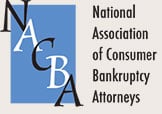Rebuilding credit after bankruptcy requires dedication and smart spending habits. To help you get started, here are 5 smart ways to trade bad credit for good credit.
If you’re considering declaring bankruptcy or have already filed, you might be curious about how to deal with a damaged credit rating. Bankruptcy provides benefits like financial peace and a blank slate, but it can also leave you wondering how you will ever rebuild your credit.
There’s no need to worry. You can begin restoring your credit right away by offsetting negative information on your credit report with more positive information. Even though bankruptcy can stay on your credit report for 7 to 10 years, its effect will fade over time, especially when you are proactive about building a better credit history.
As you look for ways to trade bad credit for good, here are 5 ways to start rebuilding your credit after bankruptcy
1. Check Your Credit Report
Credit reports may be confusing or frustrating to you, but they’re an important part of rebuilding credit. Understanding what factors affect your credit score and staying informed by periodically checking it can help you to better know where you stand as you work towards good credit. Creditors and financial institutions report data on outstanding bills, debts, and payments. The data is used to compile credit scores.
Two of the most important factors in your credit score are monthly, on-time payments of any debt and the total debt you have versus your available credit.
Making on-time payments and paying down balances is the most basic way to manage your credit report. Don’t leave this to chance. Add reminders to your calendar and save throughout the month to ensure you can pay bills on time after bankruptcy.
It’s also important to track your credit score. Checking your credit score does not negatively affect your score (this is a myth!) In fact, it can help build it in the long run because you know where you stand. Easily track your credit score month-to-month with a free credit report on an app or online. It’s a myth that pulling your credit report will hurt your credit score
2. Secured Credit Cards
Unlike traditional credit cards, a secured credit card requires a refundable deposit upfront. The financial institution holds the money as collateral for what you charge on the credit card. You can only charge up to the amount of your deposit at most institutions, but using it responsibly and paying the bill on time will positively affect your credit score.
Different financial institutions require different down payments and may offer different terms. So, it’s important to research and apply for secured credit cards that best suit you.
Because this is a credit card, remember to be wary of how often you use it. You don’t want to put yourself back in over your head in debt.
3. Secured Loan or Credit-Builder Loan
A secured loan is one backed by collateral. Lenders are willing to give these loans to folks with a poor credit history because they can take back the collateral if payments aren’t made. Car loans, for example, have the car as collateral.
A credit-builder loan requires a set deposit you put in a savings account. You make payments on the loan and after you’ve made the last one, your deposit is refunded.
Here, too, it’s important to shop around because different lenders may have different requirements and deposit amounts. Community banks and credit unions typically offer both types of loans.
Remember, you need to manage these types of loans responsibly, making payments on time and not borrowing more than you can pay back, to stay in healthy financial shape.
4. Make (And Stick to) A Budget
Making a budget and sticking to it is a good way to not only start restoring your credit and managing current bills, but it’s also a great way to prepare yourself for a healthy financial future and financial peace of mind.
Holding yourself to a budget helps to build up an emergency fund for potential unexpected expenses.. An emergency fund or savings account can also prevent you from needing high-cost loans or running up credit card debt in the future.
If you feel you need even more accountability with your budget, track your expenses and income using an app such as Mint or Budget Tracker. If you’re spending too much, strategize ways to cut back (or to earn more).
5. Free Life After Bankruptcy Guide
After filing for bankruptcy, you need to focus on rebuilding your life, finances, and credit. We can help. Our goal at Woodall & Woodall is to help you find financial peace. Our attorneys will be here with you every step of the way, to ensure a successful filing and healthy outcome.
If you’re looking for more ways to rebuild your credit, check out our guide here.
Talk with a Bankruptcy Lawyer
If you feel overwhelmed by debt or your credit, bring your questions to a bankruptcy attorney. Woodall & Woodall offers a free consultation to discuss your situation. One of our bankruptcy lawyers can help you better understand your financial situation and next steps. They can explain how bankruptcy can help you find financial peace. Bankruptcy is not shameful; it’s facing up to your problems and managing them.
We’ve helped 22,000 individuals through bankruptcy and we’re more than happy to answer any questions. Schedule an appointment today or call us at 229-247-1211 for a free consultation to talk with one of our local, caring attorneys.






